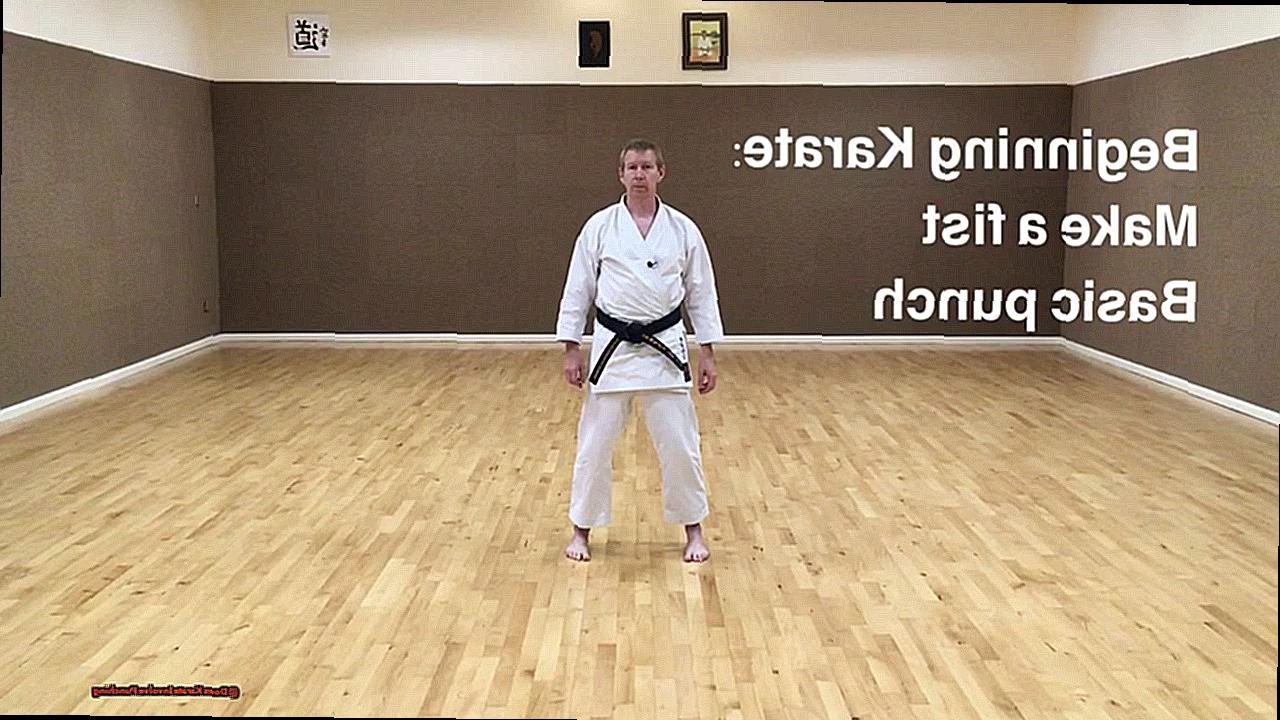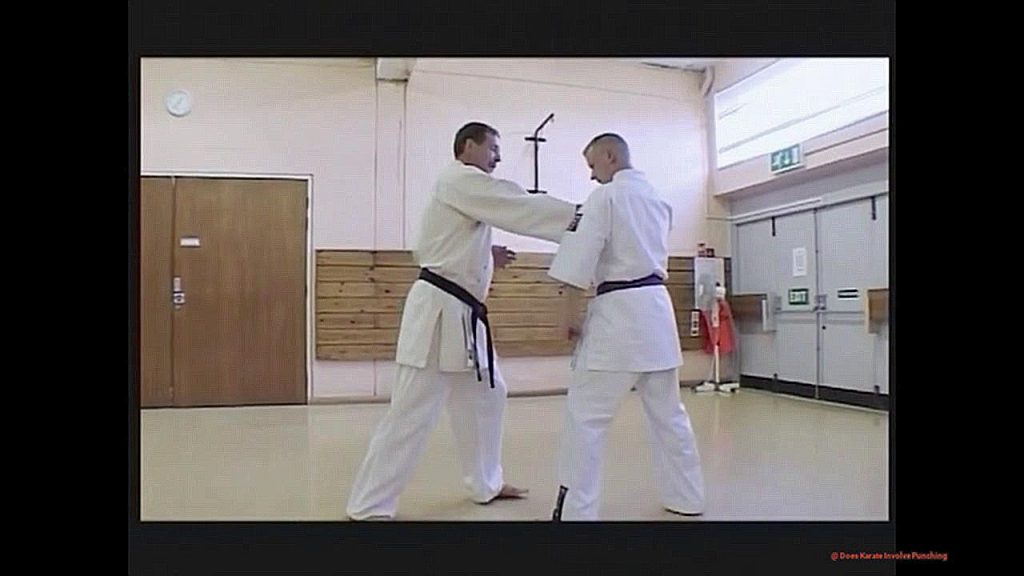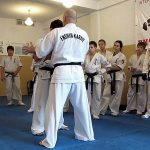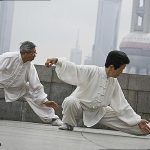Welcome to our blog post all about the art of punching in karate. Whether you’re a seasoned pro or a curious beginner, this post is packed with valuable insights and techniques to help you level up your punching game. So, let’s not waste any time and dive right into the world of karate punches.
- Karate punches are more than just brute force – they require precision and technique.
- They are a crucial part of any martial artist’s arsenal, serving both offensive and defensive purposes.
- Proper form and body mechanics are key for delivering powerful and effective punches.
- Different types of punches, such as straight punch, hook punch, and uppercut, have specific uses in a fight.
- The use of breath control and focus is essential for executing a successful punch.
- Mastering karate punches takes dedication, practice, and patience – but the payoff is worth it.

Whether you’re looking to improve your sparring skills or simply want to understand the mechanics behind those swift and powerful punches seen in movies, keep reading as we break down everything you need to know about punching in karate. Get ready to pack a punch like never before.
Boxing
Karate and boxing are two martial arts that involve the use of punches, but they differ in many aspects, such as stance, body mechanics, specific techniques, and overall approach. Let’s take a closer look at these differences to gain a better understanding of each style.
Stance and Body Mechanics:
One of the key differences between karate and boxing is their stances. In karate, practitioners stand with their dominant hand and foot forward, allowing for swift movement and strikes from various angles. On the other hand, boxers have a wider and more stable stance, with their feet planted firmly to generate powerful punches.
Moreover, the use of body mechanics also sets these two styles apart. In karate, the “hikite” technique is used involving hip rotation and core muscles to deliver strong strikes. Meanwhile, boxers rely on upper body strength and arm rotation for powerful punches.
Specific Techniques:
Both karate and boxing have a range of punching techniques, but their prioritization differs. In karate, practitioners utilize straight punches, hooks, uppercuts, and backfists, each with a specific purpose and can be executed from different angles and distances.
In contrast, boxers primarily use straight punches such as jabs and crosses along with hooks and uppercuts. These techniques are often thrown in combinations to overwhelm opponents.
Overall Approach:
The main distinction between karate and boxing in terms of punching is their overall approach. In karate, punches are used for self-defense, with an emphasis on precision and control. The aim is to target specific vital points or weak areas on an opponent’s body.
In contrast, boxing focuses on attacking with maximum force to knock out opponents quickly. This is reflected in the training methods of each style, where karateka practice slow and controlled movements while boxers train at a much faster pace.

The Main Differences Between Karate And Boxing
When it comes to striking techniques, karate and boxing have significant differences in the body parts used, level of contact allowed, stance and footwork, strikes themselves, and even mindset and philosophy. These variations are shaped by the specific objectives and rules of each discipline. Let’s take a closer look at the striking techniques used in karate and boxing to understand these differences better.
| Striking Techniques | Karate | Boxing |
| Body Parts Used | Hands, feet, elbows, knees | Hands |
| Level of Contact | No direct contact allowed | Direct contact allowed |
| Stance and Footwork | Wide stance with feet planted firmly on the ground | Narrow stance with feet constantly moving |
| Strikes | Circular motions targeting pressure points or vulnerable areas of the body | Linear punches to inflict damage to the head and body |
| Kicks | A variety of kicks included in striking techniques | No kicks allowed, purely hand-based striking discipline |
| Mindset and Philosophy | Viewed as a form of self-defense and expression of discipline and control over one’s body | Seen as a competitive sport with the goal of defeating an opponent through physical means |
As we can see, the differences in striking techniques between karate and boxing highlight how these two disciplines may involve striking but have unique approaches and goals. While karate focuses on using various body parts to strike, with the aim of delivering precise and powerful strikes without direct contact, boxing primarily relies on hand strikes and allows direct contact between opponents. These distinctions make each discipline stand out in its own way and appeal to different individuals based on their objectives and preferences.
When it comes to striking techniques, karate and boxing may seem similar at first glance, but upon closer examination, we can see that they have distinct differences. These variations not only make each discipline unique but also showcase the versatility and adaptability of martial arts as a whole.
Whether you prefer the precision and control of karate or the power and agility of boxing, both disciplines offer valuable lessons in discipline, focus, and self-defense.
Boxing Vs Karate: Which Is Best For Self-Defense?
Boxing and karate take different approaches when it comes to punching and self-defense. While boxing primarily concentrates on striking the head and upper body, karate integrates a broader range of striking techniques and targets. Furthermore, boxing puts a lot of emphasis on head movement and avoiding attacks, while karate focuses on deflecting, blocking, and evading techniques.
In the fight against an opponent, whether in a ring or in a real-life situation, it’s important to have a diverse arsenal of techniques. This is where karate has an advantage over boxing. With its vast array of striking techniques, karate allows for more options when it comes to defending oneself. In contrast, boxing’s focus on punches to the head and upper body can make it more predictable and limited in terms of self-defense.
But this doesn’t mean that boxing is not effective for self-defense. In fact, it has been proven to be an efficient form of combat for centuries. However, it’s important to understand the limitations of any style and adapt accordingly.
For example, let’s say you’re walking home late at night and suddenly someone jumps out from behind a corner. Your first instinct may be to punch them in the face, but what if they have a weapon? In this situation, knowing how to block or evade an attack can be crucial.
On the other hand, in a one-on-one fight where your opponent is only using their fists, boxing may give you an edge with its emphasis on quick and powerful punches. But even then, having some knowledge of karate can come in handy if your opponent starts utilizing kicks or grappling techniques.
Ultimately, it’s not about which style is better for self-defense, but rather understanding the strengths and weaknesses of each and being able to adapt accordingly.
Karate Vs Boxing: Which Is Best For MMA?
When it comes to mixed martial arts (MMA), both karate and boxing possess their own distinctive strengths and techniques. However, the primary contrasts between these two styles lie in their approaches, stances, types of punches, and training methods. Karate prioritizes power and precision in its strikes, while boxing emphasizes speed and accuracy. Understanding these differences is key for MMA fighters looking to integrate the most effective aspects of both styles into their training regimen.
In terms of approach, karate is known for its emphasis on strategy and tactics, while boxing is more focused on instinctual reactions and quick reflexes. This can be seen in the stances used by practitioners of each style – karate fighters tend to have a wider, more grounded stance to generate maximum power in their strikes, while boxers often adopt a more upright position to optimize their agility and movement.
Another key difference lies in the types of punches utilized by each discipline. Karate practitioners often utilize a variety of strikes, including straight punches, hooks, uppercuts, and spinning back fists. On the other hand, boxing primarily uses straight punches such as jabs and crosses, along with body shots and occasional hooks. This highlights the diverse range of techniques that MMA fighters can incorporate into their arsenal from both styles.
In terms of training methods, karate focuses on repetitive movements to perfect technique and build muscle memory, while boxing incorporates drills that simulate real fight situations to improve reaction time and footwork. By incorporating elements from both training methods, MMA fighters can develop a well-rounded skill set that combines the best of both worlds.
In conclusion, while karate and boxing have their unique approaches and techniques, MMA fighters can benefit greatly by understanding these differences and incorporating them into their training.
Boxing Vs Karate: Who Wins In A Street Fight?
In a street fight, boxing relies on punches as the primary form of striking, with great emphasis placed on speed and accuracy. Boxers are trained to deliver powerful blows using a combination of jabs, hooks, crosses, and uppercuts. In contrast, karate utilizes more linear and precise punching techniques that target specific points on the body for maximum impact.
One advantage of boxing in a street fight is its focus on close-range punches, making it more effective in confined spaces. However, this also means that boxers may be less prepared for longer-range strikes or kicks. On the other hand, karate fighters have the advantage of using their feet as weapons and being trained to strike from varying distances.
Aside from striking techniques, another key difference between boxing and karate is the use of gloves. Boxing gloves are thicker and provide better protection for the hand and wrist, allowing for harder punches without risking injury. On the other hand, karate gloves are lighter and promote faster strikes due to their use in points-based tournaments. In a street fight scenario, this could give karate fighters an edge as they would not have to deal with bulky gloves.
However, in terms of training approaches, boxing has a more realistic sparring system compared to karate’s points-based system. This means that boxers may have more experience in actual fighting situations and be better equipped for self-defense. Conversely, karate’s diverse kicking techniques and unpredictable style could give them an advantage against untrained attackers in a street fight.
To sum it up, both boxing and karate have their own strengths and weaknesses when it comes to punching techniques in a street fight.
Karate Vs Boxing: Who Wins In A Professional Fight?
When it comes to determining the advantage in a professional fight between a karate practitioner and a boxer, the question of who has the upper hand in terms of punching techniques is a difficult one to answer. Both martial arts have their own unique strengths and weaknesses, making it challenging to declare a clear winner.
| Karate | Boxing | Advantage |
| Incorporates a diverse range of punches, including straight, hook, and uppercut. | Focusses on quick jabs and powerful straight punches. | No clear advantage. |
| Integrates punches into complex forms and techniques, emphasizing speed and precision. | Training primarily focuses on punching techniques, with less variety in terms of style and technique. | No clear advantage. |
| Utilizes punches from varying distances, including long-range and close-range strikes. | Primarily relies on close-range punches for power and accuracy. | No clear advantage. |
| Puts emphasis on using both hands and feet for striking, providing a wider range of techniques. | Only uses hands for striking, limiting the range of attacks. | Karate has an advantage in terms of versatility. |
| Frequently incorporates punches into blocks and counterattacks, making it an effective defense mechanism. | Defense primarily relies on evading punches with head movement and footwork. | Karate has an advantage in terms of defense techniques. |
In conclusion, while boxing may have the upper hand in terms of power and accuracy in a street fight scenario, karate’s diverse range of punching techniques and incorporation into complex forms make it a more well-rounded martial art in a professional fight. Additionally, karate’s emphasis on defense techniques and versatility in striking with both hands and feet can give practitioners an edge over boxers. However, individual training styles and experience levels must also be taken into consideration when determining the advantage in a professional fight between a karate practitioner and a boxer.
In fact, I have personally experienced this during a sparring session with a boxer. While he had powerful punches and quick footwork, my knowledge and practice of karate techniques such as blocks and counterattacks allowed me to effectively defend against his strikes. It was only when he started to incorporate kicks into his attacks that I felt at a disadvantage, highlighting the versatility of karate in terms of striking with both hands and feet.
Conclusion
In conclusion, while both karate and boxing involve the use of punches, they have distinct differences in their approach, stance, body mechanics, techniques, and purpose. Karate focuses on precision and control for self-defense, while boxing prioritizes power and speed for competitive fighting. Each discipline offers valuable lessons in discipline and self-defense, but the choice ultimately depends on personal preference and adaptability to different situations.
Whether you’re looking to improve your sparring skills or understand the mechanics behind those swift and powerful punches seen in movies, this blog post has provided insightful tips and techniques to elevate your punching game.
So, why not give it a try and see how you can pack a punch like never before? Remember that mastering karate punches requires dedication, practice, and patience – but the rewards are worth it.






